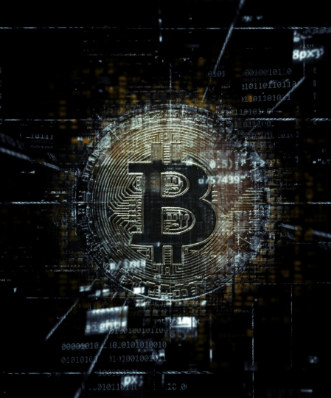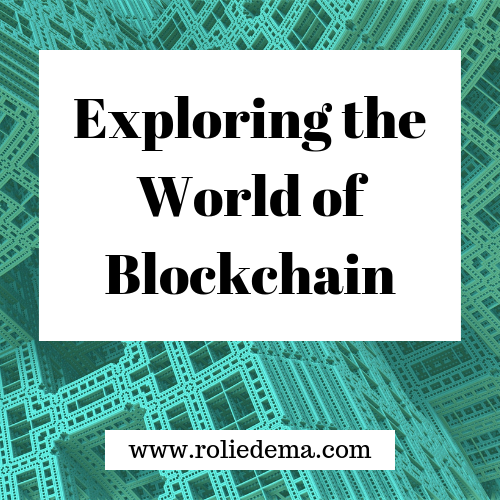Blockchain | Exploring The World of Blockchain Technology - An Essay
Blockchain technology has been predicted to change every facet of our digital lives. It's already begun. Let’s explore the world of blockchain technology...
Today let's dive deep into an interesting topic that we've seen lots of discussions around: the blockchain.
Blockchain technology is very relevant - it removes the need for a third party in systems that affect how we live, such as how we send money and even the operation of technology within our homes. This technology delivers a new type of shared database and was developed based on research into distributed systems, cryptography, computer security and game systems. Although blockchain has many possible applications and benefits, it is still an experimental and evolving technology. In this article, we will look at examples of its application, current trends, and the expected future of blockchain.
Introduction
Blockchain technology is attracting huge attention across multiple industries. It sparks a revolution unlike another other since the start of the Internet, since it goes against old ideas, changing the way that both individuals and organizations will function in the future.
Blockchains “will challenge governance and centrally controlled ways of enforcing transactions” (Mougayar & Buterin, 2016, p. 17). For centuries, trust has been in the hands of central institutions such as banks, governments, and large corporations, but the blockchain changes this power dynamic, allowing new ways of automatic validation (p. 17).
Though blockchain technology applies to multiple industries, the financial industry is seen as a primary user of the blockchain concept, particularly through a well-known application of blockchain technology – cryptocurrency (Nofer, Gomber, Hinz, & Schiereck, 2017, p. 183). Before we explore this and further applications of blockchain, let us examine the functionality and implications of the technology.
Functionality of Blockchain
A
blockchain consists of data sets which are made up of a chain of data packages,
or blocks. A block includes multiple transactions. The blockchain arises from
each additional block that is added. Hence, with a blockchain we have a
representation of a complete ledger of the transaction history (p. 183). Each
block in the blockchain also contains a timestamp, the hash value of the
previous or “parent” block, and a nonce, which is a random number used for
verifying the hash (p. 184).
Hash values are central to the blockchain’s ability to detect and reduce fraud because hash values are unique. The integrity of the entire blockchain is preserved through this mechanism because if a block in the chain is changed, this would result in changes to the respective hash value (p.184). The nodes in the blockchain network “work together” to preserve the system’s integrity. For a block to be added to the chain, the majority of nodes in the network must “agree by a consensus mechanism on the validity of transactions in a block and on the validity of the block itself” (p. 184).
This functionality of the blockchain means that transactions are not automatically added to the ledger. Through the consensus process, transactions are stored in a block for a certain amount of time before being transferred to the ledger. For example, this amount of time is 10 minutes in the Bitcoin blockchain (p. 184). We will discuss Bitcoin in further detail in subsequent sections of this paper. After this transfer to the ledger, information in the blockchain can no longer be changed (p. 184).
Mougayar & Buterin’s analysis on the blockchain helps us to understand how the blockchain works from three points of view: technically, from a business point of view, and legally. In technical terms, “the blockchain is a back-end database that maintains a distributed ledger that can be inspected openly” (Mougayar & Buterin, 2016, p. 21). From a business perspective, the blockchain is an exchange network for moving entities such as transactions and assets between peers, without a mediator. Legally, the blockchain has brought a shock to the status-quo by providing a new way to validate transactions, without the trusted entities of the past (p.21).
How does blockchain technology relate to networking? The blockchain is not a new version of the internet, nor is it the new version of TCP/IP, the internet network protocol. Rather, blockchains are an overlay on top of the internet, and they can take many forms of implementations (p. 22-23). Blockchain applications require the internet, but not the World Wide Web (the internet is a global network, whereas the World Wide Web is an application accessed via the internet that uses HTTP).
The internet is comprised of a public version and several private versions – similarly, there are public and private blockchains. There are four types of blockchain applications: blockchain hybrid web applications, blockchain native applications, blockchain hybrid private applications, and blockchain private native applications (p. 24). These different ways of building blockchain applications arise because you can either build them natively on a blockchain or mix them in an existing Web application (p. 23).
The blockchain can be described as a meta technology because it is made up of several technologies and it affects other technologies. A blockchain is comprised of several pieces: a database, a software environment, a software application, multiple connected computers, clients, tools, and other pieces (p. 26). Because of the blockchain’s ability to replace existing practices and changed other technology, it is can be viewed as a catalytic technology (p.27). Let us next consider the implication of blockchain technology in greater detail.

Implication of Blockchain
The blockchain is a distributed ledger that keeps track of every transaction processed on its network while allowing a user’s computer to verify the validity of each transaction (Mougayar & Buterin, 2016, p. 33). This distributed ledger system is beneficial because in contrast to centralized systems, the functionalities of network persist even if particular nodes break down (Nofer, Gomber, Hinz, & Schiereck, 2017, p. 184). Blockchain technology can make third parties obsolete. This ultimately increases user security, which is a change from the current practice of third parties collecting personal data and creating security issues (p. 184). With blockchain, the absence of intermediaries promotes data security.
The implication of blockchain is that trust is no longer an issue, “the integrity of the system, of every participant, and of every transaction is underpinned by the network as a whole” (The United Nations Development Programme, 2017, p. 6).
In the past, authorities were responsible for handling our transactions, data, possessions, and wealth. With blockchain, a decentralized consensus protocol serves that function (Mougayar & Buterin, 2016, p. 40).
Blockchain offers us programmable assets, trust, ownership, money, identity, and contracts (p. 48). Digital assets can be created and managed on a blockchain network without clearing-related delays that would usually happen as a result of intermediaries. Blockchain creates a new “trust factor” whereby transactions are validated via logic in the network instead of a database entry or central authority (p. 49). The blockchain also allows the time-stamping of documents representing rights or ownership. Verification capabilities are therefore brought about by these irrefutable proofs that are cryptographically secure (p.49).
Blockchain enables selective transparency and privacy, achieved through cryptographic technologies, and it also merges the clearing and settlement of assets (p. 49). Transparency brings to light the ethics of companies, so it is met with resistance but it ultimately works to improve trust. Blockchains are typically censorship resistant and more resilient than centrally controlled infrastructures because the blockchain consists of several decentralized computers and resources (p. 49). This also means that there is no single point of failure.
Let us further consider the advantages and challenges of blockchain:
Advantages of Blockchain
We can consolidate the information we’ve considered above by acknowledging five categories of benefits from blockchain technology. These are: immutability, security, verifiability, resilience and transparency (The United Nations Development Programme, 2017, p. 6).
- Immutability refers to the fact that no one peer can alter past transactions since multiple copies of a blockchain are kept and managed by consensus across a peer-to-peer network.
- Security is another advantage of blockchain, it is virtually impossible for even larger networks to undo the work of other networks.
- As we have discussed already, blockchain enables verifiability – anyone in the system can check for themselves that the rules of the system are being followed. Information cannot be manipulated, yet it can be easily verified due to the size and power of the network (p. 6).
- Another advantage of blockchain is resilience because “even if many peers go offline, the information is still accessible” (p. 6). Last but not least, there is a great balance of privacy and transparency. The ledger is transparent because all transactions are broadcast to all peers (p. 6).
Although blockchain has many advantages, the blockchain is still an evolving technology and it is not perfect. There are some inevitable risks of blockchain technology, let us consider them:
Challenges of Blockchain
Blockchain requires a number of participants to support it and to create a vibrant ecosystem around it. It is the “ecosystem of players around the technology that directly influences a blockchain’s market progression” (Mougayar & Buterin, 2016, p. 62).
- Scalability is a challenge of the blockchain, especially when it comes to the public Bitcoin blockchain. Scalability is an issue because there is difficulty in coming to an agreement on the best way to scale blockchain, and this can result in implementation delays (p. 64).
- Moreover, because blockchain is a new technology, some aspects of blockchain scalability still require ongoing scientific research (p.64). An additional complication with blockchain scalability is that there needs to be a balance between decentralization and security (p.64). This is a new problem, and currently no solution has been found for it.
- Blockchain also has security implications. The issue of blockchain security has meant that large organizations such as banks, have avoided adopting public blockchains for their internal needs (p. 65). Alongside security implications are privacy implications.
- Because any transaction on the blockchain is open and transparent, this means that “anyone can trace the path of a transaction including the value it holds, and its originating and destination address” (p. 64). However, there are now solutions to such privacy issues since values in transactions can be encrypted, and identities can be hidden through zero-knowledge proof schemes (p. 65).
- Because blockchain is a new technology, an implication of its introduction is a lack of clear regulations. When regulations are not clarified, it results in uncertainty for players in the blockchain space (p. 68). It is more difficult to regulate decentralized entities than central ones, and this presents a problem because blockchain is centralized by default. More innovative regulations are needed to manage blockchain interactions, but we expect to see more solutions in the future.
Most of the above challenges arise because blockchain is still in the infancy of its adoption. But as blockchain becomes more popular and society becomes more knowledgeable about the technology, we can expect that we will be able to navigate around these challenges.
Next, let’s explore some of the various applications of blockchain technology.

Applications of Blockchain Technology
Bitcoin
Cryptocurrency was the first blockchain application. Many people recognize blockchain as a foundation for digital currencies such as Bitcoin, Litecoin and Ethereum. The massive attention that Bitcoin received was due to the fact that it gave individuals full possession of their money in the digital realm through sole ownership of a cryptographic key necessary for the transfer of funds (IEEE, 2017, p. 4).
Bitcoin was created by the pseudonym Satoshi Nakamoto with open source code that belongs to the public domain. Blockchain technologies are centralized, thus Bitcoin operates through a peer-to-peer network of connected computers. The Bitcoin network is a database that holds past transactions as well as the current holders of the funds (Franco, 2014, p. 4).
Bitcoin identifies users by large strings of letters and numbers called addresses. Nodes in the network do not know the personal identities of users, only their addresses. Bitcoin software generates cryptographic public and private keys and addresses are created inside the user’s device during this process (p. 14). In a centralized system, the funds are held by a central entity, however, in a decentralized system, the private keys that give access to the funds are solely in the hands of the end users (p. 15).
Bitcoin is basically a protocol used to create distributed consensus. Bitcoin and similar protocols can transfer any digital asset, enabling the adoption of smart contracts. Smart contracts are contracts that are settled by running a computer program, so they do not need human interpretation or intervention to complete (p. 9).
Bitcoin is an API (Application Programming Interface) for money, and bitcoin currency is one application. Bitcoin can be used as a protocol on top of which applications can be built, just like email, web browsing, or voice-over-IP are built on top of the TCP/IP protocol (p. 10). Regardless of whether or not Bitcoin becomes a widely adopted currency in the future, Bitcoin has proved that the technology and applications are possible, and this spurs future innovation with similar platforms.
Identification
Blockchain technology has been applied with the process of verifying the identity of individuals. Most internet services offer users one of two options for identity authentication: by creating a unique registration for a particular site, or by outsourcing such verification to another large web service such as Google or Facebook (IEEE, 2017, p. 5).
As an alternative, blockchain applications allow users to manage accounts “containing various authenticated fragments of their identity, which they then can selectively disclose” (p. 5). The identification capabilities of blockchain technology have been proposed as a solution to a number of issues. For example, it could help with the emergency processing of refugees who were forced to leave their countries of origin without official documentation. Blockchain identity management systems could also be used by the general public to help people more easily recover their records in the case of emergencies (p. 5).
Government
There are many government and governance-related applications of blockchain technology such as blockchain services for marriage registration, benefits collection, licenses, birth certificates, taxes, voting, and more (Mougayar, W., & Buterin, V., 2016, p. 94). BitNation is an example of what is possible, it features a public notary service where anyone can record and timestamp their legal documents on the blockchain. BitNation also covers insurance, social, security, and diplomacy services and is currently being used by Estonia (p. 94).
Supply Chains
Blockchains have been proposed as a replacement for documentation processes in the shipping industry - this is because products typically go through many geographical regions, and a break in the communication chain can lead to delay and loss of profits (IEE, 2017, p. 5). Blockchains may provide a way for an accessible certification and documentation system that is impossible to falsify. Blockchain technology may also aid in reducing the prevalence of counterfeit drugs in the pharmaceutical supply chain (p. 5).
Energy
Blockchain applications can support existing energy suppliers and ensure consistent and affordable energy in underserved areas. Accenture has revealed a proof-of-concept of a smart plug prototype: when demand is high or low it searches for energy prices and then uses the modified blockchain to switch suppliers if it finds a cheaper source (Mougayar, W., & Buterin, V., 2016, p. 96). Grid Singularity is experimenting with the blockchain to authenticate energy transactions, with the eventual goal of building a blockchain platform for energy systems that can be applied to any type of transaction on the grid (p. 96).
Future Opportunities
Sending sums of money via bank transfer or traditional Money Transfer Operators (MTOs) can be slow and expensive, especially for underbanked populations. Opportunities lie in decentralized, blockchain based alternatives that are both secure and cost-effective – they can cut transfer fees in half (The United Nations Development Programme, 2017, p. 17). New transaction systems “have already shown great promise in areas with significant unbanked populations” (p. 17).
According to research from the company called Blockchain (cited by The United Nations Development Programme, 2017, p. 19), we are seeing five important trends with digital asset wallets:
- The adoption of digital wallets and currencies has been rising exponentially all over the world since they were made available
- This growth is mostly in frontier and emerging markets
- These wallets and currencies are used mostly for cross-border payments
- People are using these digital wallets and currencies more often, with transactions doubling in number every 12-18 months
- Transaction volumes are rapidly increasing
These trends “provide evidence that low-cost, open transaction networks are providing considerable value to the unbanked”. Blockchain transactions have three distinctive advantages to the traditional methods:
- Blockchain technology provides significant speed improvements (from days to seconds)
- Blockchain transactions remove the need for intermediaries and a large proportion of fees associated with infrastructure costs
- They promote transparency. Combined with identity verification, they make it easier for regulators to observe the flow of funds
Thus we can expect increased opportunities for the application of blockchain in the sending and receiving of remittances, particularly in underbanked areas.
There are also opportunities for blockchain advancement in the area of property rights. Smart contracts can reduce the friction of involving the banking sector while at the same time ensuring that transactions are completed automatically after approval is received.
According to the United Nations Development Programme (2017), using a blockchain technology, a shared ledger, and accompanying digital identities has several benefits (pp. 31-32):
- Registry data is kept transparent and unchangeable through the decentralised nature of blockchain technology
- Using digital identities in the land registry system can provide faster and more accurate transaction information
- Participation is stimulated through land owner’s confidence in the system’s legitimacy
- Blockchain technology will be cheaper than the conventional methods of land administration and will be available for reference 24/7
- Blockchain technology can be easily connected to other decentralised ledgers e.g. in the finance sector
Remittance Handling and Property Rights are two areas in which there are blockchain opportunities. But there are many others, here are a few more example of what we may be able expect in the future, perhaps in the next 5 years (Mougayar, W., & Buterin, V., 2016, pp. 123-125):
- Cryptocurrency-only banks will emerge, offering a variety of financial services based on virtual currencies
- Digital or hardware e-wallets will become mainstream, or embedded in smartphones and wearables
- Digital representations of any physical commodity or asset (e.g. gold, silver, diamonds) will be traded on blockchains, anywhere in the world
- Healthcare medical records will be instantly, securely and permanently shared between patients and doctors, and routinely updated in a decentralised way
- Decentralised consensus protocols will become a common part of any technology stack implementation, both in public and private settings
Conclusion
In 2017, Bitcoin experienced an unprecedented boom, at one point 1 BTC was equal to over $19,000. Yet, in January 2018, Bitcoin experienced a huge crash, falling in price by about 65% just within that month. After this rise and fall, many people seemed to lose confidence in blockchain technology – associating it only with a specific type of cryptocurrency (Bitcoin). However, it is evident that there is are a broad range applications of blockchain technology, across many industries. There are many exciting avenues in which the blockchain can be utilized, and this will continue to evolve over time.
Blockchain competitive advantage is a guide on how to strategically leverage blockchain technology as an entrepreneur, investor, or business. It further explains the massive opportunities presented by blockchain technology and how to best position yourself in the midst of the revolution.
Also, Cyrptoglobe is a good resource for staying up-to-date on blockchain news.
Thanks for reading!
References
Franco, P. (2014). The Blockchain. In Understanding Bitcoin (pp.
95–122). Chichester, UK: John Wiley & Sons, Ltd. https://doi.org/10.1002/9781119019138.ch7
Institute of Electrical and Electronics Engineers (IEEE). (2017). Reinforcing the links of the blockchain. Retrieved from https://blockchain.ieee.org/images/files/pdf/ieee-future-directions-blockchain-white-paper.pdf
Mougayar, W., & Buterin, V. (2016). The business blockchain : promise, practice, and application of the next Internet technology. Hoboken, New Jersey: John Wiley & Sons, Inc.
Nofer, M., Gomber, P., Hinz, O., & Schiereck, D. (2017). Blockchain. Business & Information Systems Engineering, 59(3), 183–187. https://doi.org/10.1007/s12599-017-0467-3
The United Nations Development Programme. (2017) The Future is Decentralised. Retrieved from https://www.undp.org/content/dam/undp/library/innovation/The-Future-is-Decentralised.pdf
Thanks for reading! If you liked this content, share with a friend:
Recent Articles
-
What I Wish I Knew About Setting Healthy Boundaries
Jan 10, 25 03:31 PM
Healthy boundaries are the difference between refreshing, life-giving relationships, and toxic, life-sucking ones. Here's what I wish I knew about setting healthy boundaries... -
5 Best Accountability Coaches Online to Help You Reach Your Goals
Jan 01, 25 09:45 PM
Struggling to stay committed to your goals? Here are the best accountability coaches online to provide you with the support you need to reach success. -
Your Entire Life is a Form of Self-Expression
Nov 02, 24 01:15 PM
“Attuned choice by attuned choice, your entire life is a form of self-expression. You exist as a creative being in a creative universe. A singular work of art.”




